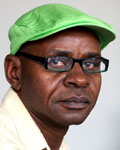
Subscribe & Follow
Jobs
- Senior Graphic Designer Johannesburg
- Advertising Specialist - Get It Magazine Durban Durban
- Media Sales Specialist Johannesburg
- Media Buyer/Planner Rosebank
- Junior/Mid-Level Video Editor Johannesburg
- Personal Assistant and Project Coordinator to CEO Cape Town
- SEO and Content Creator Intern Cape Town
- Media - Sales Manager - Digital or Broadcasting Exp Essential or Both Johannesburg
- Head of Performance Marketing South Africa
- Journalist Intern Johannesburg
Mixed fortunes for newspapers, mags - ABC Q2
“These results have shown some fantastic developments. Daily newspapers are stable and have reduced emphasis on PMIE (print media in education) and third party bulks, with healthy growth seen in typical blue collar titles,” ABC's Gordon Patterson told the audience.
But KwaZulu-Natal-based dailies have not done so well, possibly falling victims of economic pressures, according to the results.
“The decline of weekly titles were driven by losses suffered by larger titles, but a concerning increase was seen in third party bulks - mainly from Mail & Guardian,” Patterson noted.
“Weekend category appears stable but large titles are struggling to maintain their position, but Weekender and Sunday Sun are doing well.
“Overall, community press and free newspapers are stable, with growth coming mainly from new titles.”
Biggest casualty
However, the biggest casualty of these results is undoubtedly the consumer magazines, which have taken a real beating as a result of smaller print runs as well as economising consumers, according to the figures.
“Third party bulk circulation has continued to shrink and is down some 26%,” Patterson remarked, adding that controlled free distribution is also well down and in particular bulk non-requested has plummeted from 94 834 copies to a mere 15 741.
“While many titles have shrunk, there are those champions in each category that buck the trends. These titles show the way forward and should inspire further innovation because it is clear that readers remain vital and responsive to a ‘good read',” Patterson said.
“It is clear that print has been through a tough time and in certain areas there are still a few hurdles ahead.
“While concerns over the economy are certainly valid reasons for some circulation declines it must also be said that some of the declines must be attributed to cutbacks as a result of growing input cost pressures.
“The introduction of greater accessibility to the data by decision makers will, however, ensure increased and more immediate market support,” he advised.
Nominal growth
Meanwhile, figures released by AC Nielsen and presented by Toni Twine of Econometrix show the following in terms of nominal growth in print adspend categories (January - June 2008):
- Total magazines: 3.6%
- Total newsprint: 7.1%
- Total media: 7.0%
- Total print: 6.1%
- Shares of newspapers and magazines in total media adspend are: newsprint 28.0% and magazines 11.1%.
Twine said that the phenomenal growth in adspend media - as a Unilever study put it - might be a result of the rise of ‘Black Diamonds'. “Advertisers are getting the message and responding accordingly,” he said.
“Total media adspend tends to lead to economic and consumption cycles. During the years of high adspend growth, print growth is very close to total growth while during years of low adspend growth, print growth comes in lower than total adspend growth.
“Throughout the current decade, magazine adspend has seldom grown as fast as newsprint, and this is in conflict with the rapid expansion of magazines titles over the past few years,” he concluded.




















